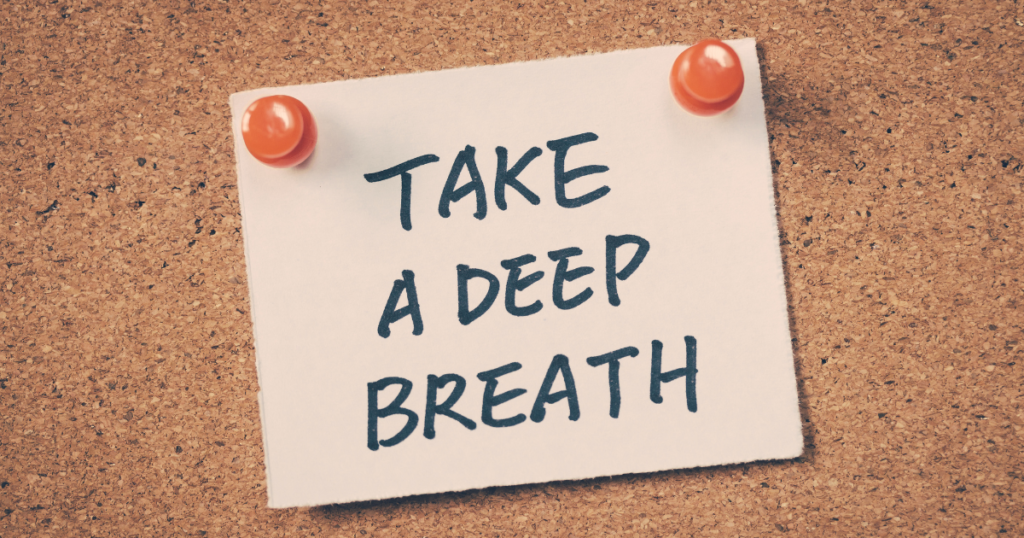
Breathing—it’s something we do every moment of every day, yet few of us truly harness its full potential. Breathwork, the practice of conscious and controlled breathing, has been used for centuries across various cultures to promote healing, relaxation, and mental clarity. Whether you’re looking to reduce stress, improve focus, or enhance overall well-being, incorporating intentional breathwork into your daily routine can be a game-changer.
What Is Breathwork?
Breathwork refers to a range of techniques that focus on manipulating breathing patterns to influence physical, mental, and emotional health. It’s been a core element of ancient traditions like yoga (pranayama), Taoism, and Buddhism and is now widely used in modern wellness practices, including mindfulness, therapy, and athletic performance training.
By consciously controlling the breath, you can tap into the body’s autonomic nervous system, shifting between states of relaxation and activation. Breathwork helps regulate stress responses, improve oxygen circulation, and support overall vitality.
The Incredible Benefits of Breathwork
Breathwork isn’t just about relaxation—it has scientifically backed benefits that impact multiple areas of health and well-being.
Reduces Stress & Anxiety
Deep, controlled breathing activates the parasympathetic nervous system, which counteracts the body’s stress response. Techniques like diaphragmatic breathing and box breathing lower cortisol levels, helping you feel calmer and more grounded.
Boosts Energy & Focus
Proper oxygenation through breathwork improves brain function, sharpens concentration, and enhances mental clarity. Practices like the Wim Hof Method or Kapalabhati (skull-shining breath) are particularly effective in increasing energy levels and focus.
Enhances Sleep Quality
Struggling with restless nights? Breathwork can help by slowing the heart rate, relaxing the nervous system, and preparing the body for deep, restorative sleep. Techniques like 4-7-8 breathing are known to promote relaxation and make it easier to fall asleep.
Supports Heart & Lung Health
Conscious breathing strengthens lung capacity, improves circulation, and helps regulate blood pressure. Slow, deep breathing techniques like Coherent Breathing (5 breaths per minute) can enhance cardiovascular health and improve oxygen exchange.
Promotes Emotional Healing
Breathwork can be a powerful tool for emotional processing and trauma release. Certain techniques, like Holotropic or Conscious Connected Breathwork, allow deep emotional experiences to surface, helping to release stored tension, grief, or past trauma.
Enhances Physical Performance & Endurance
Athletes and fitness enthusiasts use breathwork to optimize oxygen intake, boost stamina, and improve recovery. Nasal breathing, for example, increases nitric oxide production, enhancing endurance and overall performance.
Popular Breathwork Techniques to Try
Whether you’re new to breathwork or looking to deepen your practice, here are some powerful techniques to explore:
Diaphragmatic Breathing (Belly Breathing)
Diaphragmatic breathing, also called belly breathing or deep breathing, is a technique that fully engages the diaphragm, the dome-shaped muscle at the base of the lungs. Unlike shallow chest breathing, which relies on the upper chest and shoulders, diaphragmatic breathing allows for optimal oxygen exchange, promotes relaxation, and helps regulate the nervous system.
- Breathe deeply into your belly rather than your chest, expanding your diaphragm fully.
- Best for: Reducing stress & anxiety, improving oxygenation, enhancing lung function, aiding digestion, and calming the nervous system.
Box Breathing (4-4-4-4)
Box breathing, also known as square breathing, is a structured breathing technique that involves inhaling, holding, exhaling, and pausing in equal counts—usually four seconds per phase. This method is widely used by athletes, military personnel, and individuals dealing with stress or anxiety because it helps regulate the nervous system and improve focus.
- Inhale for 4 seconds, hold for 4 seconds, exhale for 4 seconds, and hold for 4 seconds.
- Best for: Reducing stress & anxiety, enhancing focus & mental clarity, regulating the nervous system, improving emotional control, supporting lung function, lowering heart rate & blood pressure, boosting sleep quality, increasing mind-body awareness, and resetting the mind.
4-7-8 Breathing
4-7-8 breathing, also known as the “relaxing breath,” is a powerful breathing technique designed to promote deep relaxation and reduce stress. Developed by Dr. Andrew Weil, this method follows a simple pattern: inhale through the nose for 4 seconds, hold the breath for 7 seconds, and exhale slowly through the mouth for 8 seconds. The extended exhale helps activate the parasympathetic nervous system, signaling the body to relax. This technique is particularly effective for reducing anxiety, improving sleep, and calming the mind in moments of stress. Beginners should start with just 4 cycles per session and gradually increase as they become more comfortable.
- Inhale for 4 seconds, hold for 7 seconds, exhale for 8 seconds.
- Best for: Reducing stress & anxiety, improving sleep quality, lowering blood pressure, enhancing lung function, promoting emotional regulation, supporting detoxification, aiding in managing cravings.
Wim Hof Method
The Wim Hof Method is a breathing technique developed by Wim Hof, also known as “The Iceman,” and is designed to enhance oxygenation, improve resilience to stress, and boost overall well-being. This method involves 30-40 deep, rhythmic breaths, followed by a breath hold after exhalation for as long as comfortable, and then a deep recovery breath held for 15 seconds before repeating the cycle. Typically, practitioners perform 3-4 rounds in a session. The technique works by temporarily altering blood chemistry, increasing oxygen levels, and reducing carbon dioxide, which can lead to a heightened state of awareness and increased energy. When combined with cold exposure and mindset training, it is said to enhance immunity, endurance, and mental resilience.
- Take 30 deep breaths, then exhale and hold before taking a deep recovery breath.
- Best for: Boosting energy & focus, increasing immune function, increasing resilience, strengthening the respiratory system, supporting emotional regulation, increasing endurance & physical performance, facilitating deeper meditation & mindfulness, enhancing cold tolerance, and enhancing oxygen efficiency.
Cautions & Considerations
- Avoid practicing while driving, in water, or in unsafe environments due to the possibility of lightheadedness or temporary loss of consciousness.
- Those with respiratory, cardiovascular, or neurological conditions should consult a healthcare professional before attempting the method.
- Beginners should start in a comfortable, seated or lying position to prevent dizziness-related falls.
- Some people may experience tingling, lightheadedness, or temporary sensations of euphoria—these are normal but should be approached mindfully.
Alternate Nostril Breathing (Nadi Shodhana)
Alternate Nostril Breathing, also known as Nadi Shodhana, is a traditional yogic breathing technique that helps balance the nervous system, improve focus, and promote relaxation. This practice involves breathing through one nostril at a time in a controlled pattern, which is believed to harmonize the body’s energy channels (nadis) and cleanse the mind.
- Inhale through one nostril while closing the other, then switch sides.
- Best for: Calming the nervous system, enhancing focus & mental clarity, balancing energy channels, improving lung function, reducing stress & anxiety, promoting cardiovascular health, and aiding mindfulness & meditation.
Buteyko Breathing Method
The Buteyko Breathing Method is a technique developed by Ukrainian physician Dr. Konstantin Buteyko in the 1950s. It focuses on slow, controlled nasal breathing to help regulate the body’s oxygen levels and improve overall health. The method is primarily known for its role in managing breathing disorders such as asthma, anxiety, and sleep apnea, but it also offers numerous benefits for general wellness.
- Focuses on nasal breathing, reduced breath volume, and breath-hold exercises to improve oxygen efficiency and CO2 tolerance.
- Best for: Improving oxygenation, reducing asthma symptoms, reducing stress & anxiety, supporting better sleep, increasing energy levels, promoting mindfulness & relaxation, improving respiratory function, and increasing endurance.
Cautions & Considerations
- If you have chronic respiratory conditions or severe breathing difficulties, consult a healthcare provider before starting the Buteyko method.
- Ensure you practice slow and gentle breathing, as over-breathing can lead to dizziness or lightheadedness.
- Buteyko is not a quick fix—it requires consistent practice over time to see lasting benefits.
- Start with shorter sessions and gradually increase the duration as you become more comfortable.
The Buteyko Breathing Method is a powerful tool for those dealing with breathing difficulties, stress, or even general wellness goals. With consistent practice, it can help you breathe more efficiently, improve your health, and experience a greater sense of relaxation.
Breathwork is a simple yet profoundly effective tool that anyone can use to enhance their physical, emotional, and mental well-being. Whether you want to reduce stress, boost energy, or improve focus, conscious breathing can help you access a calmer, more balanced state of being.
Give it a try today—just one intentional breath at a time!

Comment